Recently, I interviewed a manga scriptwriter named Araki Joh, the author of several best selling manga series published by Shueisha, the publishing house behind the Jump line of manga. If you're not familiar with Jump manga, you may be familiar with some of their titles like Dragon Ball, Naruto, and One Piece (the top 3 bestselling manga of all time).
After answering all my questions, Araki Joh extended his generosity even further by inviting me to the Shueisha building in Chiyoda-ku, Tokyo to see the editors' room. Not only did I get a tour of part of the building and the editors' room, I also got an interview with Araki Joh's editor and learned a lot about how manga gets published.
Buckle up for a part-travel, part-interview hybrid adventure. Let's go see some manga magic!
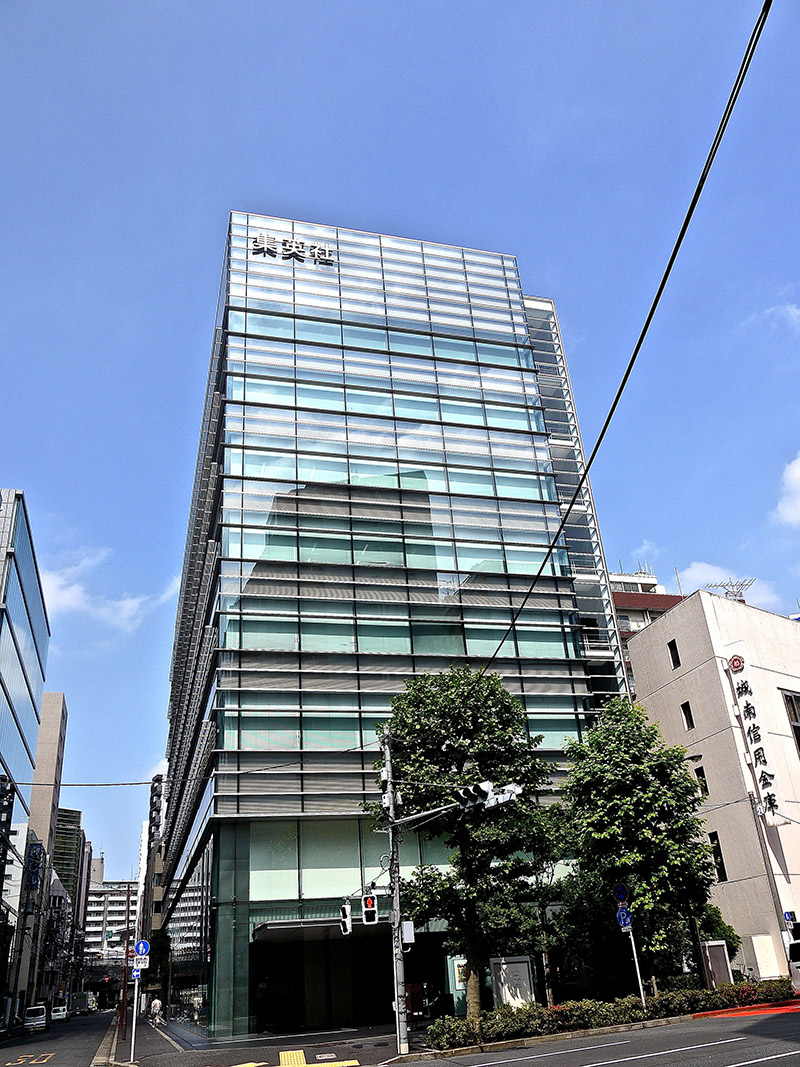
This is the Shueisha building located in Jinbocho, Chiyoda-ku, Tokyo. Its modern design suits the progressive city. The white and blue in the glass exterior both mimics the sky and helps reflect it.

There is actually a gallery on the first floor, which is open to everyone during the week from 9:30a.m. to 5:30p.m. Sadly, I didn't really have much time to check it out, because I was on official business. But if you're a manga fan visiting the Tokyo area, be sure to pop in and look around.
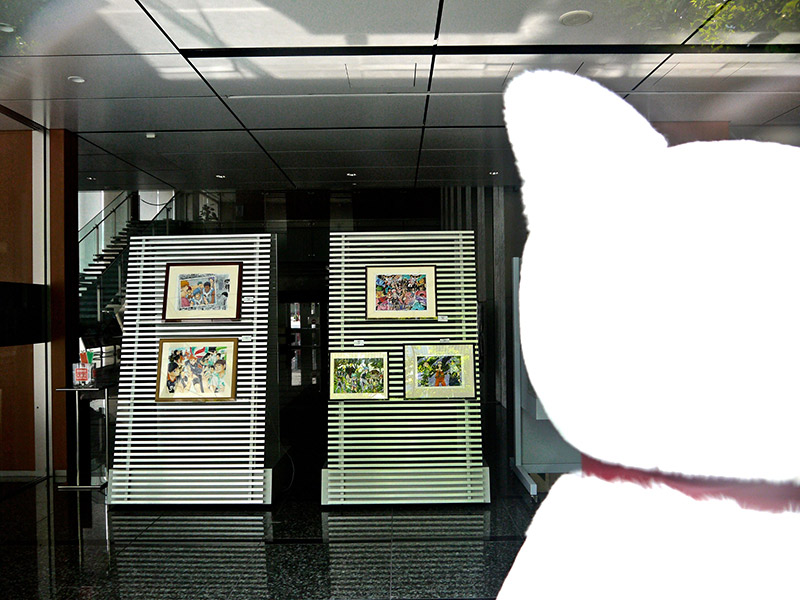
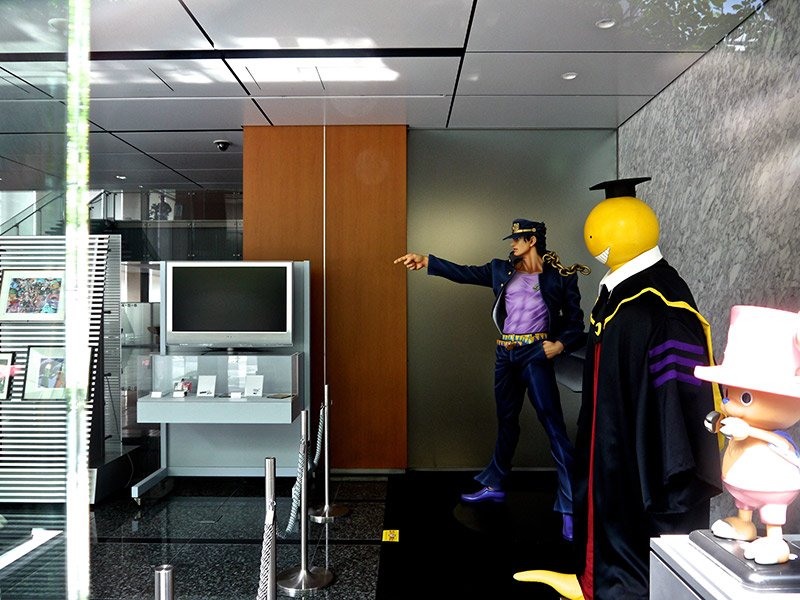
I only got to take a couple pictures of the gallery from the street side window. As you can see, there are a few framed manga drawings and awesome character statues. Too bad that rope is keeping us from posing next to JoJo and Chopper.
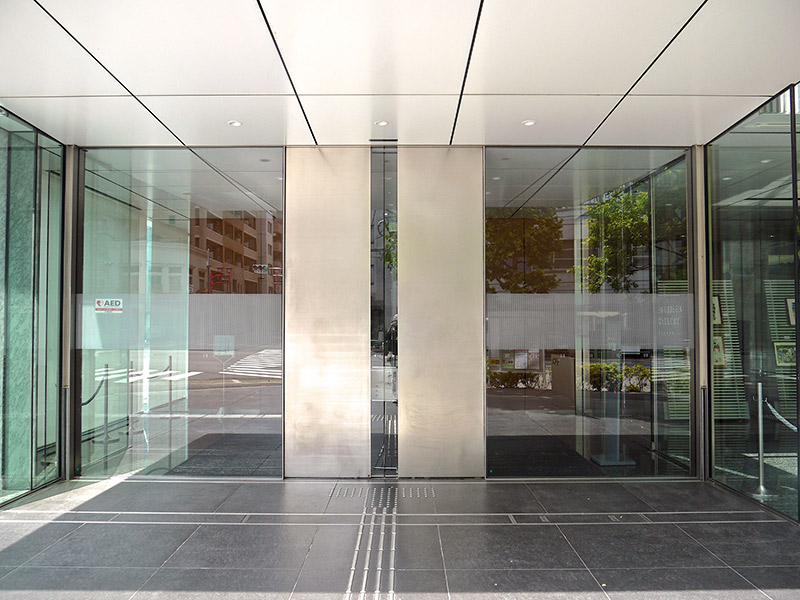
Okay, it's time to go inside! There is a reception area past this door and you need an appointment to go upstairs. But because I was with Araki Joh, I didn't need to check in and, thus, there are no pictures of it. Did you really want to see pictures of a desk?
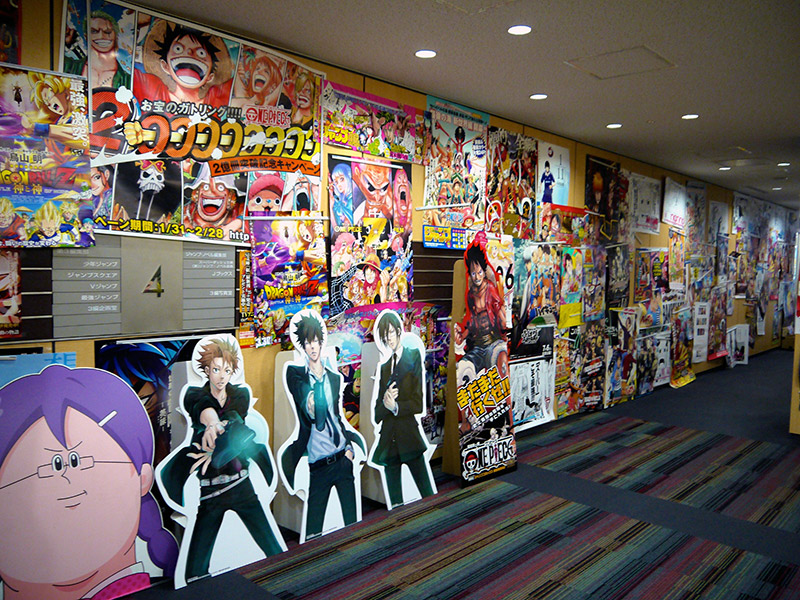
I was given access to two floors of the building. I was immediately impressed with how thick the walls were with familiar faces.
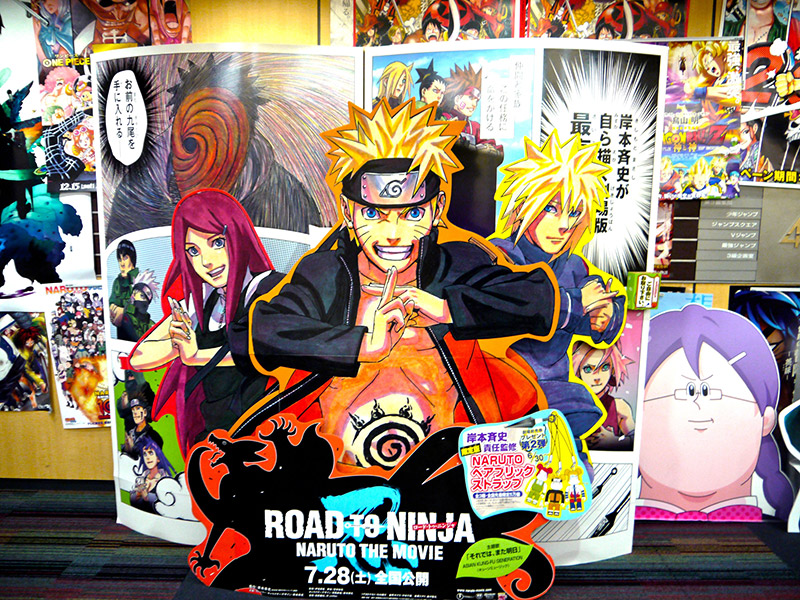
Naruto…
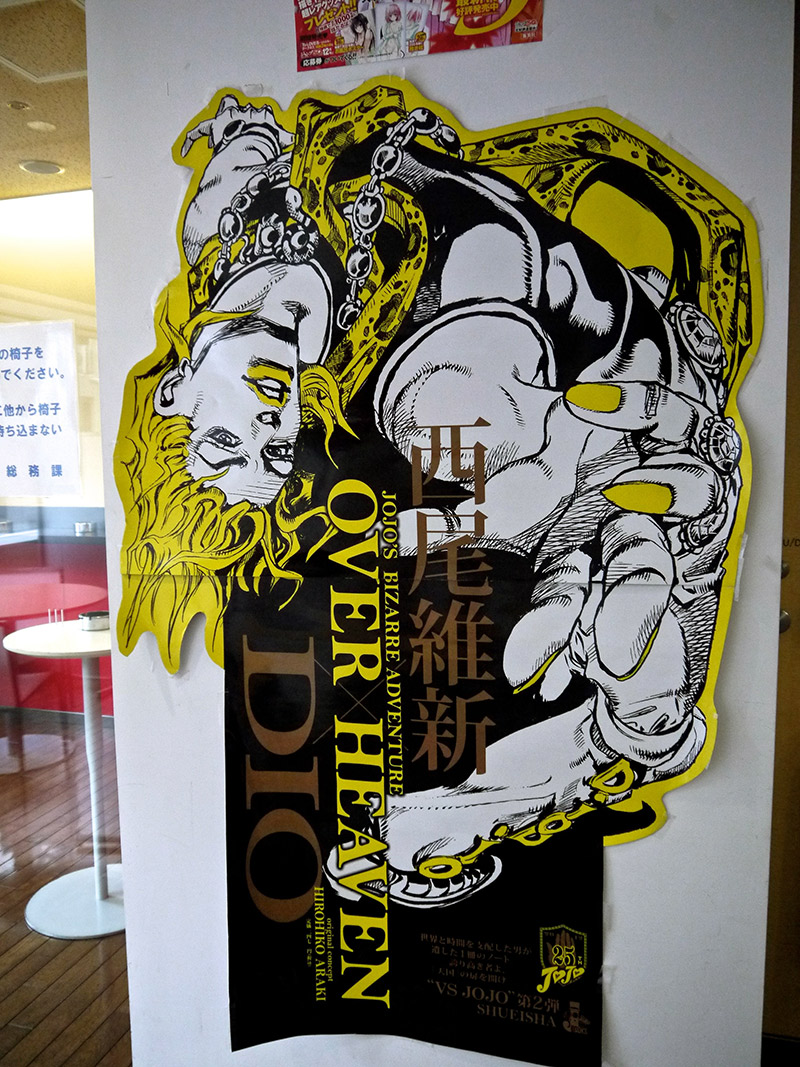
Jojo's Bizarre Adventure…
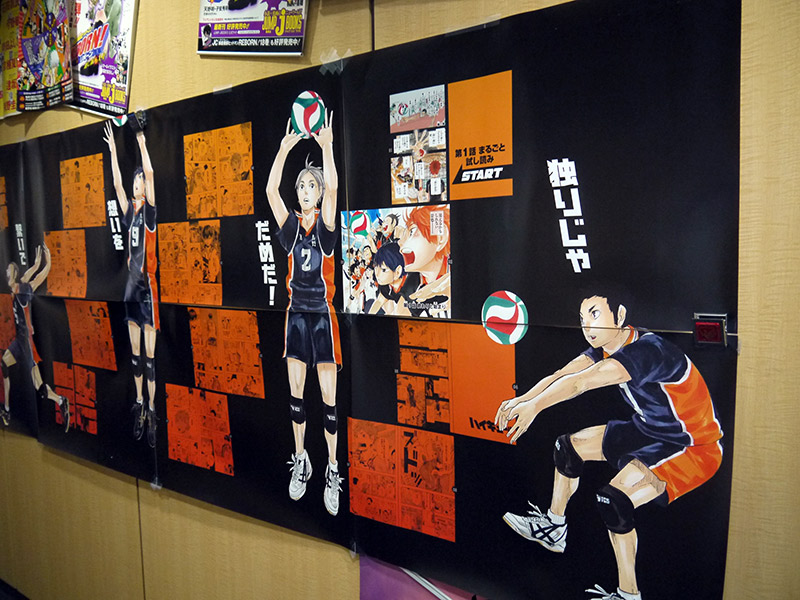
And Haikyuu! were some of the highlights. They were all fun to look at and gave the offices a unique energy. You could feel that Japan's greatest manga flows through this place.
Finally, it was time to enter the editors' room.
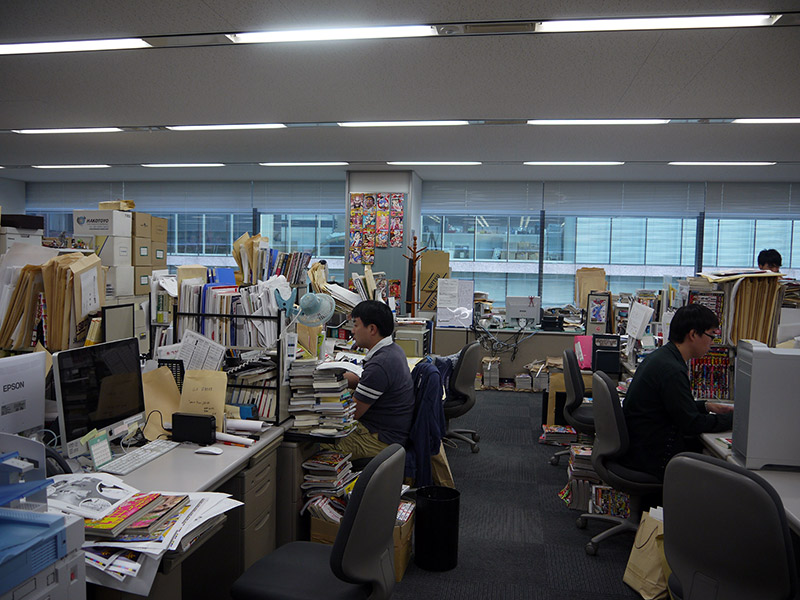
Ta-Da! As you might notice, the majority of the employees here are male. I only saw one woman, who was in a part time position, working on this floor.
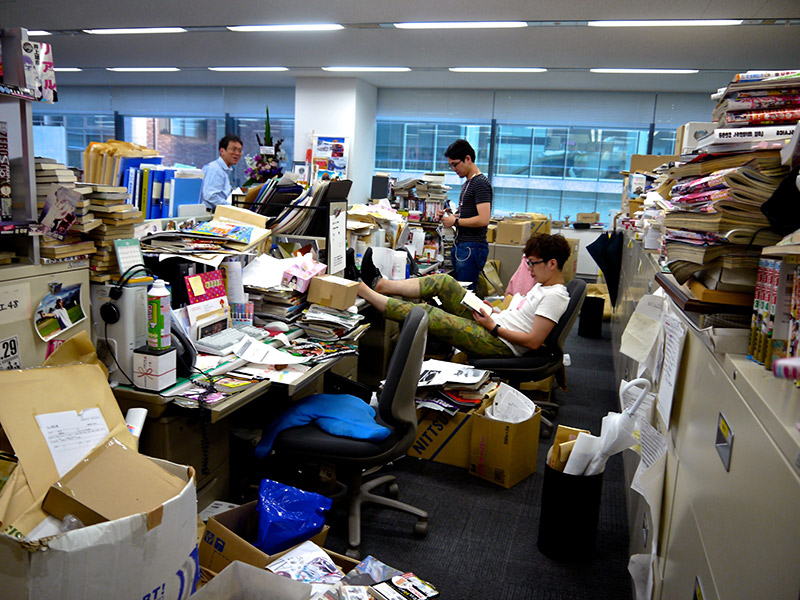
While most everyone diligently attended to their duties, I found this guy reading manga with his legs up.
"Really?" I jealously, but quietly, exclaimed. This surprised me at first, but I was soon told that it's all part of being an editor. What a nice perk!
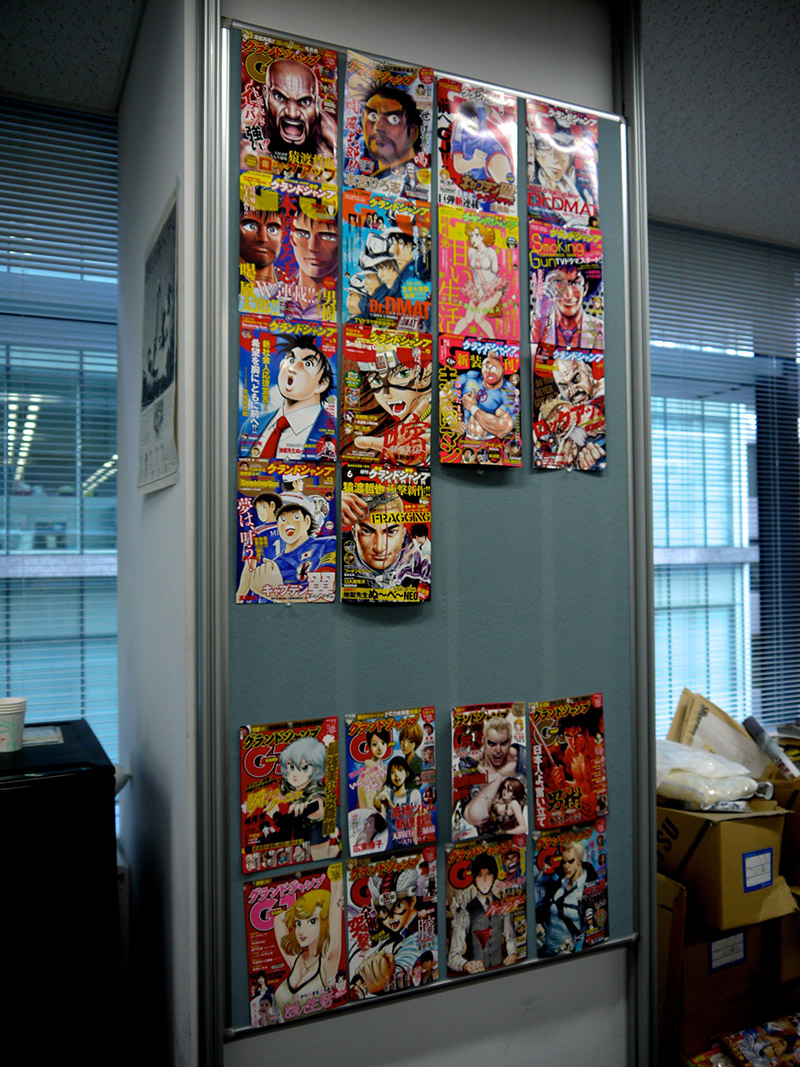
Adding to the flavor of the office was a gallery of former Grand Jump covers.
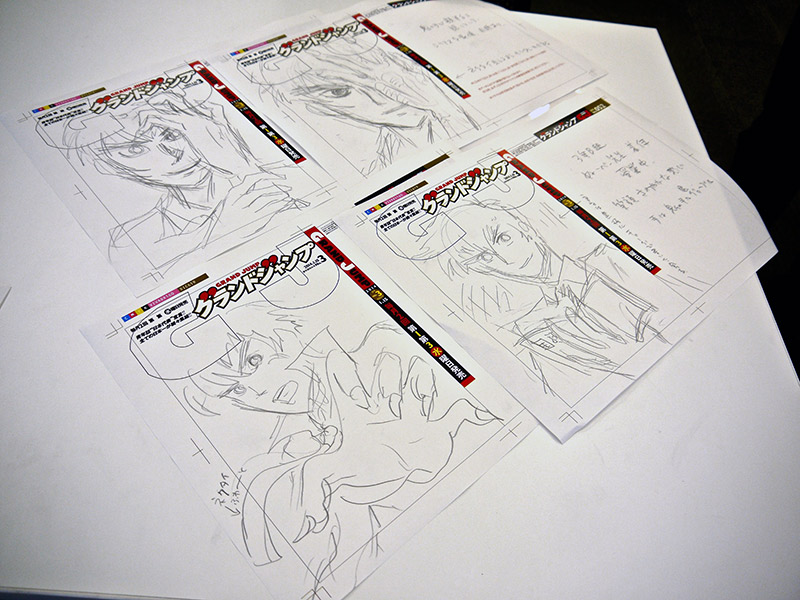
All the covers on the gallery wall started out this way. The cover artist must first prepare a few ideas to choose from.
Do you think you have what it takes to be a manga editor? Take a minute to look over the sketches, then see which one was selected. (Update: sadly, these sketches have been removed from the site. That's why you need to read all our articles as soon as they come out.)

If editors get any rare and valuable down time, they can choose from a huge library of manga to kick back and relax with. While this may seem like a lot manga to you and me, there's actually a whole ton more in another room.

Because most mangaka (manga artists) work from home, I felt fortunate to come across a mangaka working on his storyboards. (A wild mangaka appeared!)
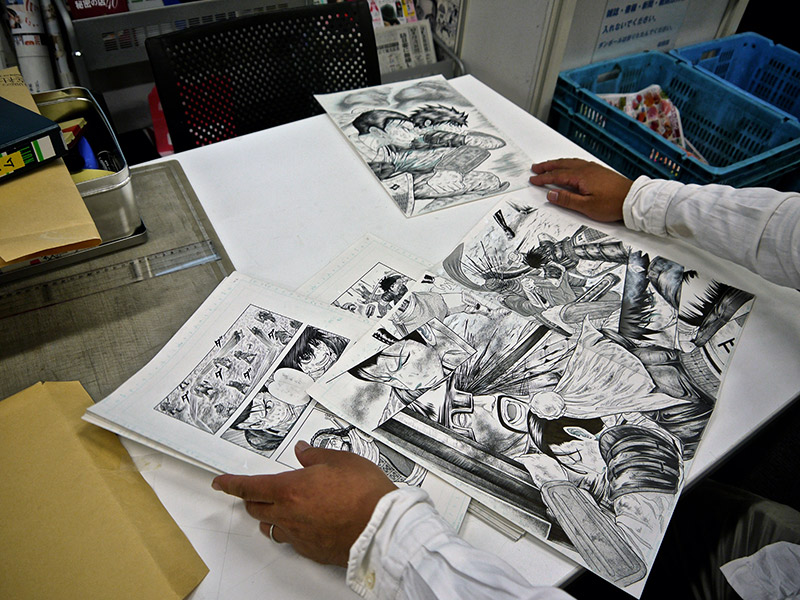
When mangaka are finished with their pages, they bring them into the office for publication. The completed pieces look like this. They are much more extraordinary and expressive than the printed versions, don't you think?
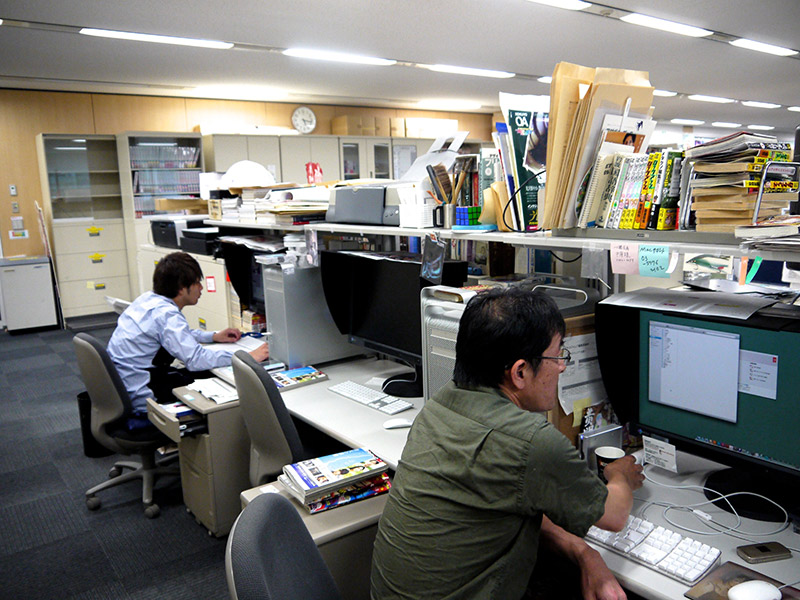
After the pages are submitted, designers put finishing touches on the manga drawings. These guys decide where to place dialogue and which colors and fonts to use.
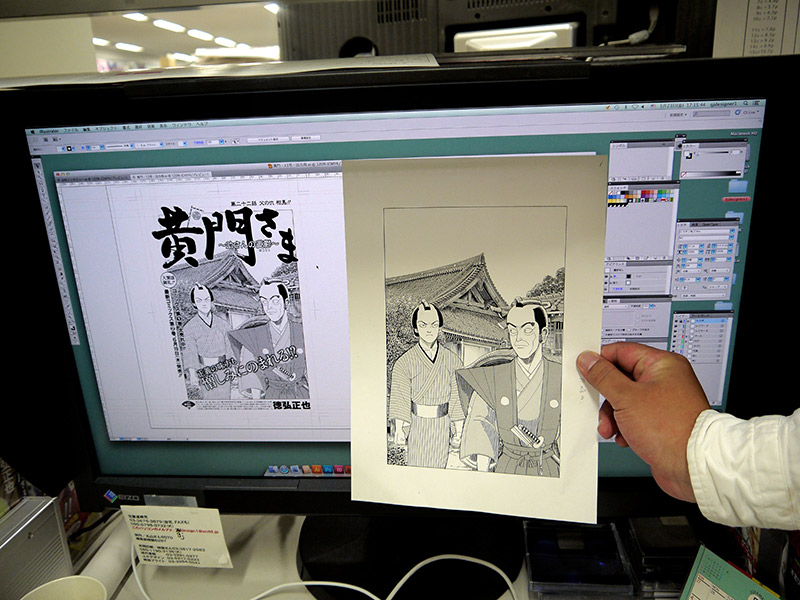
Check out the before and after. The designers added a lot of information and style to the finished product. Once the designers are done with the drawings, the files are sent to a print shop.
Interview Time!
After the tour, I got an exclusive interview with a manga editor at Shueisha who worked with Araki Joh. He asked to remain anonymous, so imagine him as a mysterious hero of the manga editing world. I hope you enjoy it!
Q. What does a manga editor do?
First, we conduct meetings with manga writers. Once a script is completed, we take it to a manga artist. When the manga drawings are finished, we take it to a print shop and they make a sample for us to proofread. If we are happy with the final product, we give the go ahead to start printing the magazine.
I'm an editor for Grand Jump, which is published every two weeks, so we have really fast turnaround and it can be very hectic. Just imagine what it must be like for editors doing weekly publications.
And, of course, we attend company meetings as well.
Q. Could you tell me how to become a manga editor?
There are three big steps involved in getting a desk inside a manga company.
First, you fill out an "entry sheet" and send it to us. So many people want to join Shueisha and this is our first method of screening. If your entry sheet is accepted, you can move on to the next step, which is an exam. The exam is pretty long (about four hours) and it contains current topics, common knowledge, Japanese literature, English, Kanji, and an essay. After passing this exam, you will have to make your way through a couple interviews.
Once past this entire process, only a select few will be asked to join our company. Even if you make it that far, management decides which department you'll work for, so you'll need a bit of luck to become a manga editor.
Anyway, that's the process, but you shouldn't think of how to get into the company you want to work for. Instead, you should think of what you would want to work on if you were actually employed there. That helps you relax, and helps you figure out what you really want to do and why you want to become a manga editor.
Q. What is the best part of being a manga editor?
We share a sense of achievement and joy when a manga becomes a hit. The feeling is stronger for a manga that has both a scriptwriter and a manga artist, because those make me feel as if I played a larger role in creating the story. It would be truly wonderful to help lift a writer and/or manga artist up from obscurity, like what happened with the manga "Bakuman." But I haven't experienced that yet.
Q. What is the worst part about being a manga editor?
We have to wait for scripts and manga to arrive on our desks and sometimes they don't come on time. I have to wait and wait and wait and wait, and if it still hasn't come, it feels almost as if I've been betrayed.
Since I've grown up a little bit and come to respect the creative process, I understand that it's just the way things are in this job, but it can still be a bit frustrating at times.
Q. What are the some of the manga you've worked on?
I worked as an editor for girls' manga before moving to Grand Jump, but I haven't worked on any famous manga other than Bartender.
Q. Which was your favorite?
Sorry, I don't have a lot of choices to pick from. As you've probably guessed, it's Bartender. Although it became a hit, it was not an easy journey. We worked so hard together, though that's not to say I haven't worked hard on other manga.
After Bartender, I worked on a manga called "Hotaru – Yuigon Bengoshi Masaki Jimusho" and it didn't do as well, so it ended pretty quickly. I still think it would have become much more popular and the story would have developed quite nicely if it lasted a little longer.
Q. Since you're an editor, I imagine that sometimes you have to tell an author that you need to cut something or add something. Is this difficult to do?
It depends on the author, but it's difficult in terms of word choice and timing. When the authors don't have much confidence, they ask for advice from us. If I have known an author for a long time, I figure out what they want, what they are trying to say, or what they are asking of me a lot quicker, so it's easier than working with authors that are less familiar with me.
Q. If somebody wanted to be come a manga editor, what should they do?
Read a lot of manga. As you can see in the pictures above, reading is a pivotal part of the job. You should read it as if you were the creator and think about how you would make the story better. You should also know of a lot of manga writers and artists and think about if one of them would make a better fit for the specific manga you're reading.
We need as much information as possible about a manga when we ask writers and artists to write and draw for our magazine. Famous people don't usually just write for a magazine out of nowhere, but getting a great piece of work out of them is also part of our job. At the very least, we read every major manga magazine currently published when it's released.
In addition, you should also try to reflect on the reasons why a manga inspired or moved you a great deal. Especially try to remember the ones that drew you in and affected you when you were a child. The most useful skill when working in the manga industry is your sensitivity to recognizing why particular thoughts and emotions were cultivated from those books. Hence, what you read today becomes tomorrow's ink.
Access
If you want to go to the Shueisha Gallery on the first floor of the Shueisha building, you can visit it on weekdays from 9:30a to 5:30p.
Address: 3-13, Jinbo cho, Kanda, Chiyoda-ku, Tokyo, Japan
Hours: 9:30a to 5:30p, Monday-Friday
Access: 2 minute walk from Toei Shinjuku Line, Tokyo Metro Hanzomon Line "Jinbo cho" station
